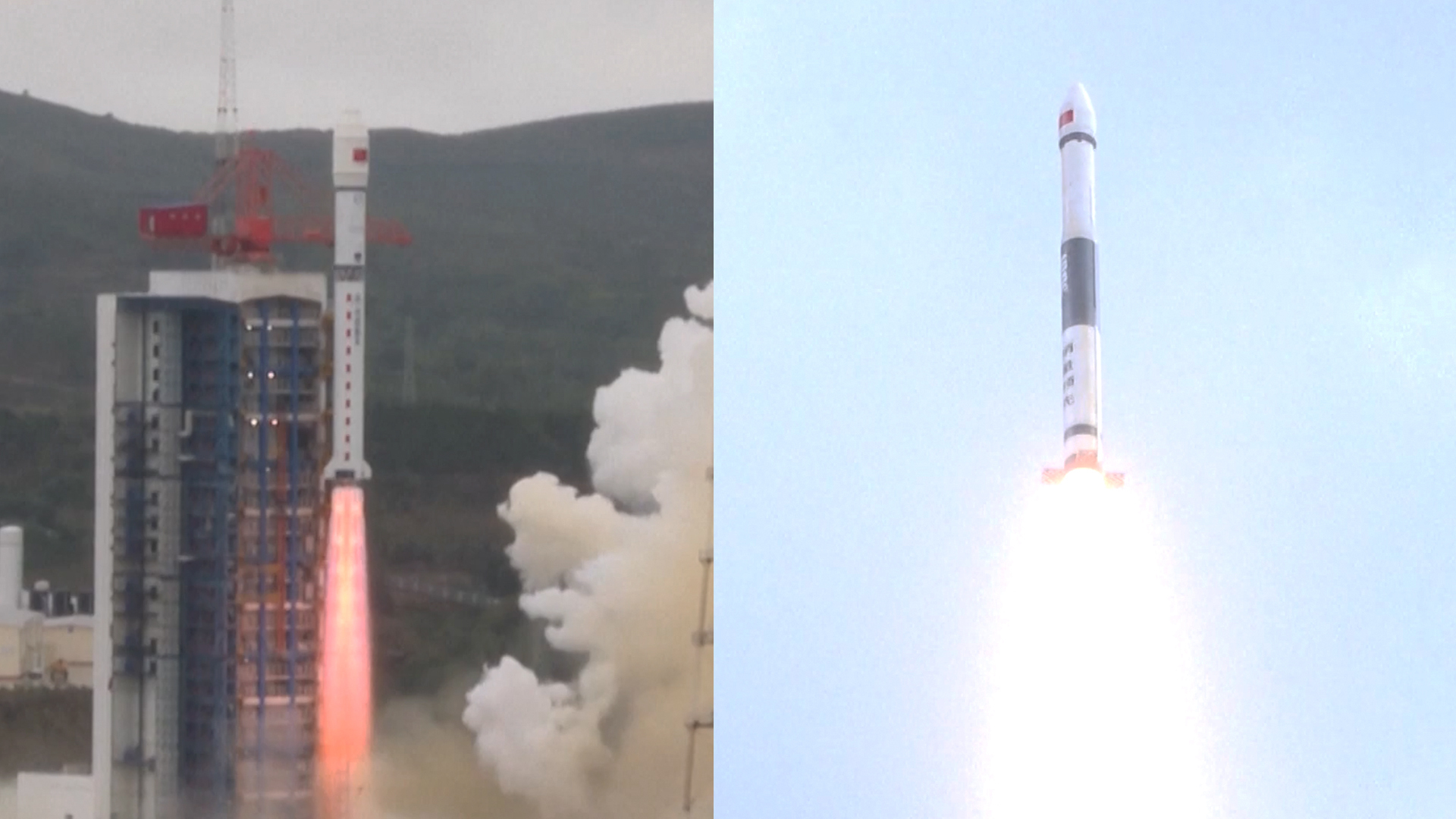
China launched separate sets of Earth-observation and "Internet of Things" satellites into orbit on Friday (Sept. 20) on two different missions.
The action began at 12:11 a.m EDT (0411 GMT, or 12:11 p.m. Beijing time) on Friday, when a Long March 2D rocket lifted off from Taiyuan Satellite Launch Center in northern China. Insulation tiles fell away from the rocket's payload fairing as it climbed into cloudy skies above the spaceport.
Aboard were six remote-sensing satellites for Changguang Satellite Technology (CGST), a commercial spinoff from the Chinese Academy of Sciences. The Jilin-1 Kuanfu (wideband) 02B satellites numbers 1-6 add to CGST's Jilin-1 commercial remote-sensing constellation, which is planned to consist of 300 satellites when completed, and provide high-resolution imagery. The company was founded in 2014 and has already launched more than 100 satellites.

U.S. Space Force space domain tracking picked up objects associated with the launch in near-circular, 339 by 330-mile (545 by 531 kilometers) near-polar orbits. This choice of orbit, common for Earth observation and remote sensing, allows the satellites to image the same spots on the planet at the same time of day repeatedly.
Related: China's Long March rocket family: History and photos
China's second launch of the day took place just under six hours later. A Kuaizhou 1A solid rocket launched at 5:43 a.m. EDT (0943 GMT, or 5:43 p.m. Beijing time) from Xichang Satellite Launch Center in the country's southwest, according to Expace, the commercial launch provider affiliated with the state-owned defense giant CASIC.
Aboard were four Tianqi satellites, numbered 29-32, for Guodian Gaoke, a Chinese commercial satellite operator. The satellites provide low-bandwidth communication to connect Internet of Things (IoT) devices in remote or hard-to-reach locations.
The U.S. Space Force tracked the satellites from the launch in 529 by 523-mile-altitude (852 by 842 km) orbits inclined by 45 degrees.
Guodian Gaoke — full name Beijing Guodian Hi-Tech Technology Co., Ltd. — aims to build a 38-satellite constellation. The satellites serve the agriculture, logistics and transportation fields, providing real-time data collection and monitoring, which can improve operational efficiency in remote areas.
The rocket was sponsored by the children's nutrition brand Inne, according to Expace. The launches were China's 42nd and 43rd of the year.







